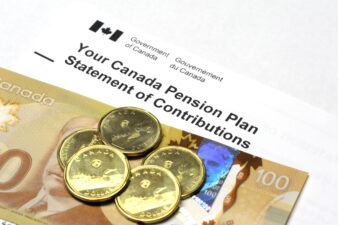The primary reason for investing your savings is to generate inflation-beating returns over time. It’s essential to identify various asset classes and diversify your portfolio, which lowers overall risk. So, let’s see where you should invest $10,000 in November 2023.
Should you invest in GICs?
Guaranteed income certificates are low-risk fixed-income instruments, making them ideal for those nearing retirement. The recent hikes in interest rates have increased the yields on guaranteed income certificates considerably in 2023. Several banks offer GICs with an annual yield of more than 5%, providing you with a stable stream of recurring income.
Even younger investors should hold around 20% of total investments in lower-risk asset classes such as GICs to reduce overall volatility.
Invest in quality dividend growth stocks
Investing in quality dividend stocks is a proven strategy to generate market-beating returns. You need to identify companies that are positioned to grow earnings and cash flows across business cycles, which in turn should result in consistent dividend increases.
For instance, TSX companies such as Goeasy and Canadian Natural Resources have increased dividends by more than 15% annually in the past two decades. In this period, GSY stock has returned 3,130%, while CNQ is up 2,000% after adjusting for dividends.
You need to create a diversified portfolio of dividend stocks and identify companies across sectors such as banking, energy, and healthcare to benefit from a predictable stream of income. Quality dividend stocks can account for 20% of your portfolio.
Invest in diversified exchange-traded funds
Around 95% of large-cap funds fail to beat the benchmarks. So, it makes sense to buy and hold exchange-traded funds such as the Vanguard S&P 500 ETF (TSX:VSP), which has returned 150% in the last 10 years after adjusting for dividends.
The VSP ETF tracks the S&P 500 index, providing investors with exposure to some of the largest companies in the world, including Apple, Tesla, Exxon Mobil, and Microsoft. Generally, ETFs and mutual funds should account for a majority of your investment portfolio. So, if you have $10,000 to invest right now, buy diversified ETFs worth $5,000.
Invest in gold stocks
The threat of an upcoming recession and geopolitical tensions may act as tailwinds for gold prices in the next 18 months. Historically, gold has been viewed as a store of value and hedge against inflation and is among the most popular commodities globally.
If you expect prices of the precious metal to move higher, you can either gain exposure to gold by holding exchange-traded funds or buying shares of gold mining companies such as Newmont (TSX:NGT).
Valued at $43 billion by market cap, Newmont is engaged in the production and exploration of gold, copper, silver, lead, and zinc. It has operations and assets in the Americas, Australia, and Ghana. The company ended 2022 with portable gold reserves of 96.1 million ounces and a land position of 61,500 square kilometres.
Down 47% from all-time highs, Newmont stock currently offers investors an annual dividend of $2.21 per share, translating to a forward yield of 4.1%. Priced at 14.4 times forward earnings, Newmont stock trades at a discount of almost 100% to consensus price target estimates.
A combination of gold ETFs and gold mining stocks can account for 10% of your investment portfolio.







